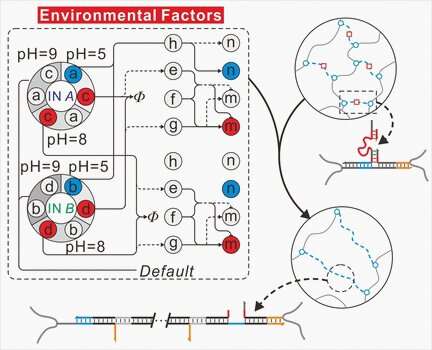EurekAlert June 2, 2021
Researchers in China have developed a configurable, multi-mode logic switching network that reacts differently with its surroundings depending on pH and DNA input. They developed a series of four DNA switches, each with slightly different lengths and combinations of bases. At a slightly alkaline pH of 8, two of the switches formed triple-stranded DNA, while the others remained loosely stretched out. These reactions and folds led to secondary reactions, which were utilized by the researchers as logic functions in the switching circuit. In demonstration DNA acted as a crosslinker, joining the polymer molecules in the gel together. Shorter the crosslinker the denser the gel became. The reaction circuit was also dependent on the pH. Their approach provides insight into building smart responsive materials and fabricating autonomous soft robots…read more. TECHNICAL ARTICLE
DNA circuits
Posted in Bioelectronics and tagged Biotechnology, DNA circuits, DNA computing, S&T China, Smart materials.
